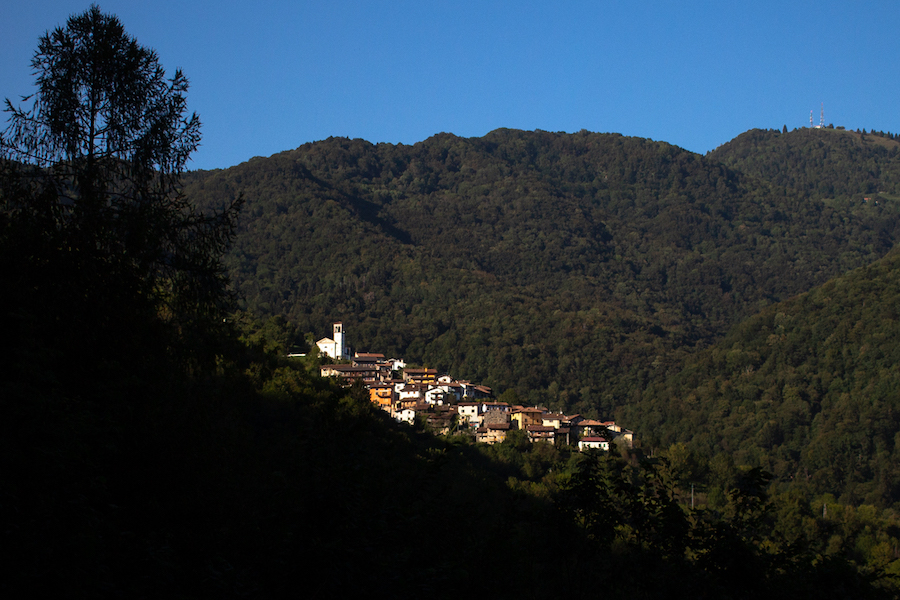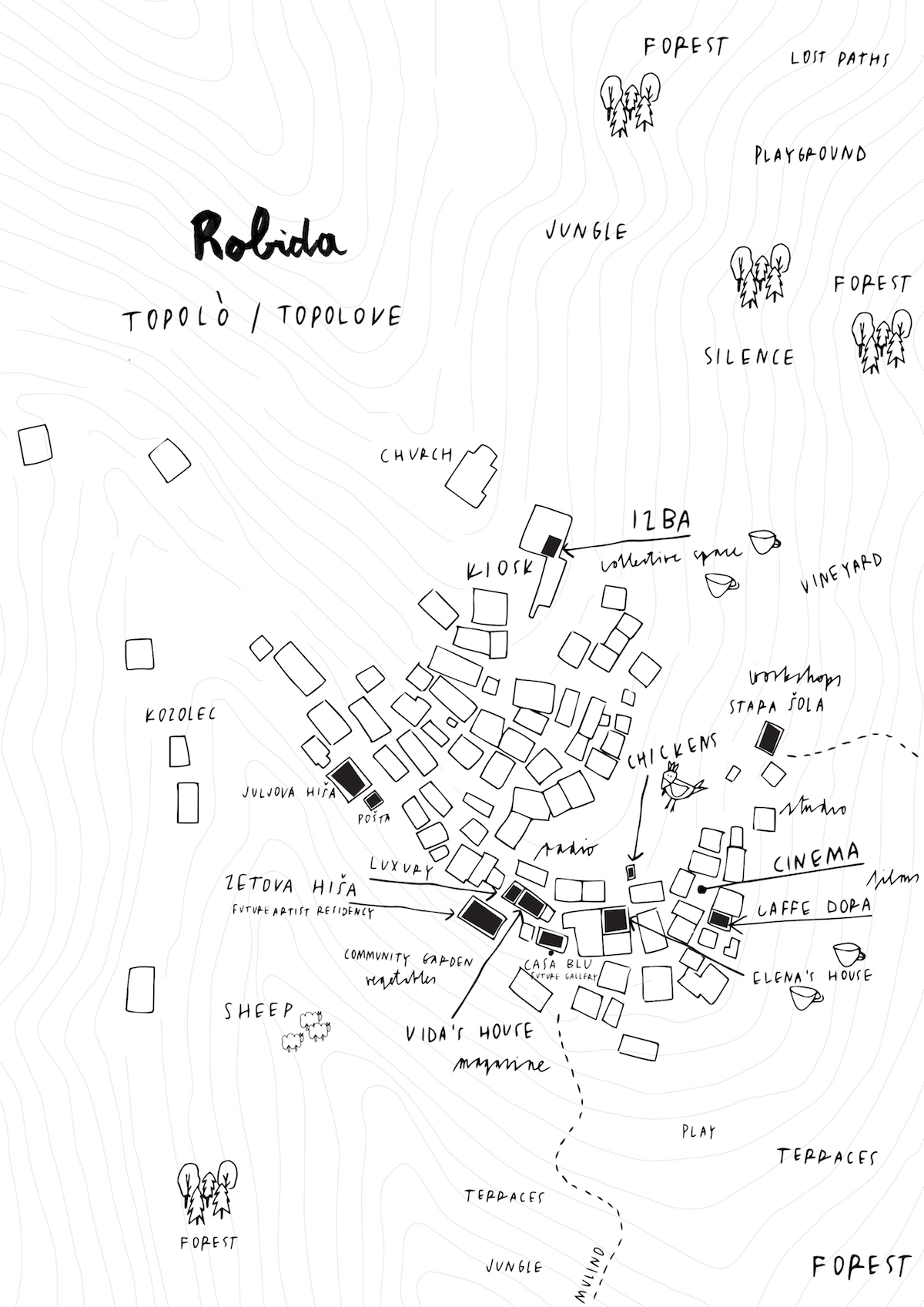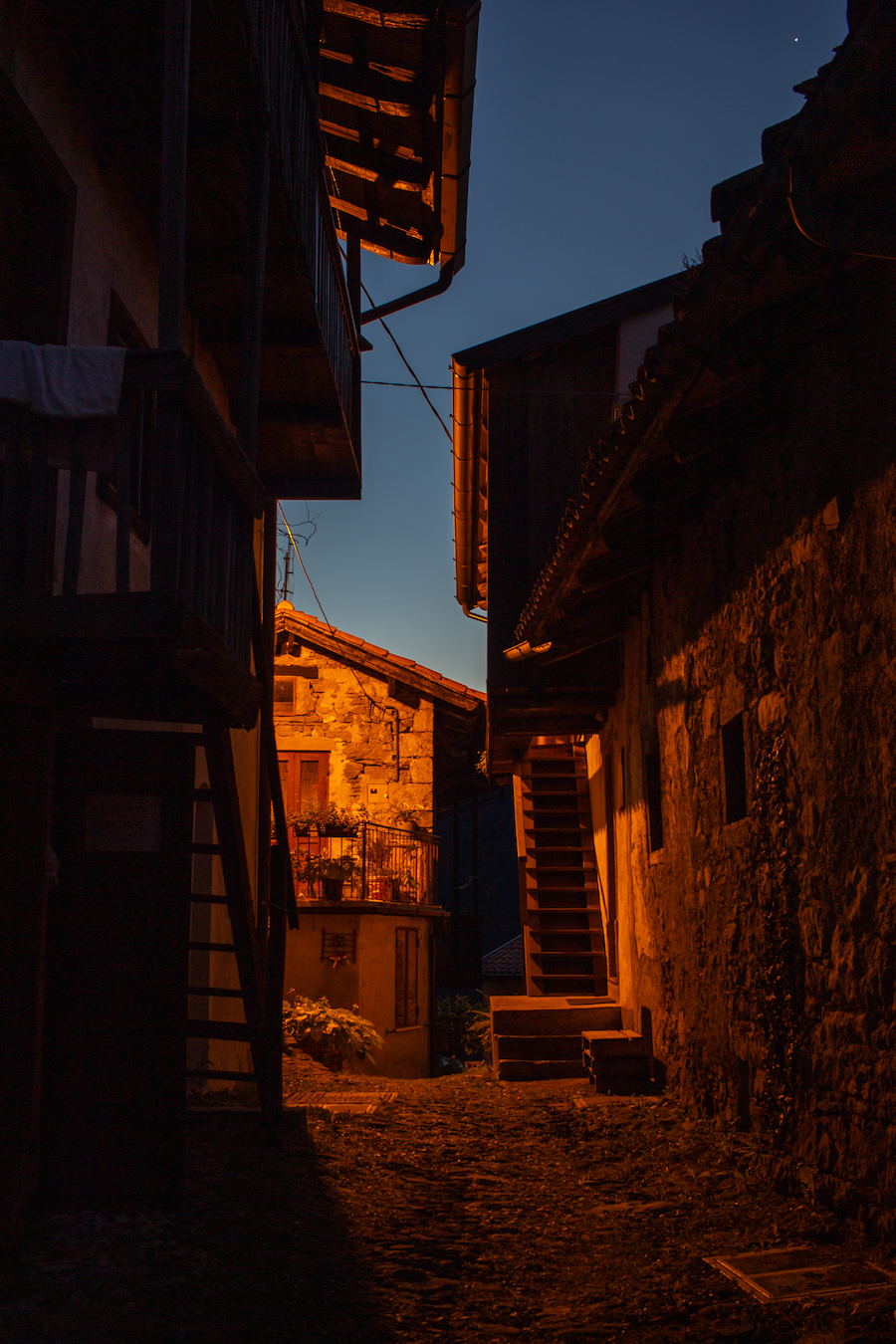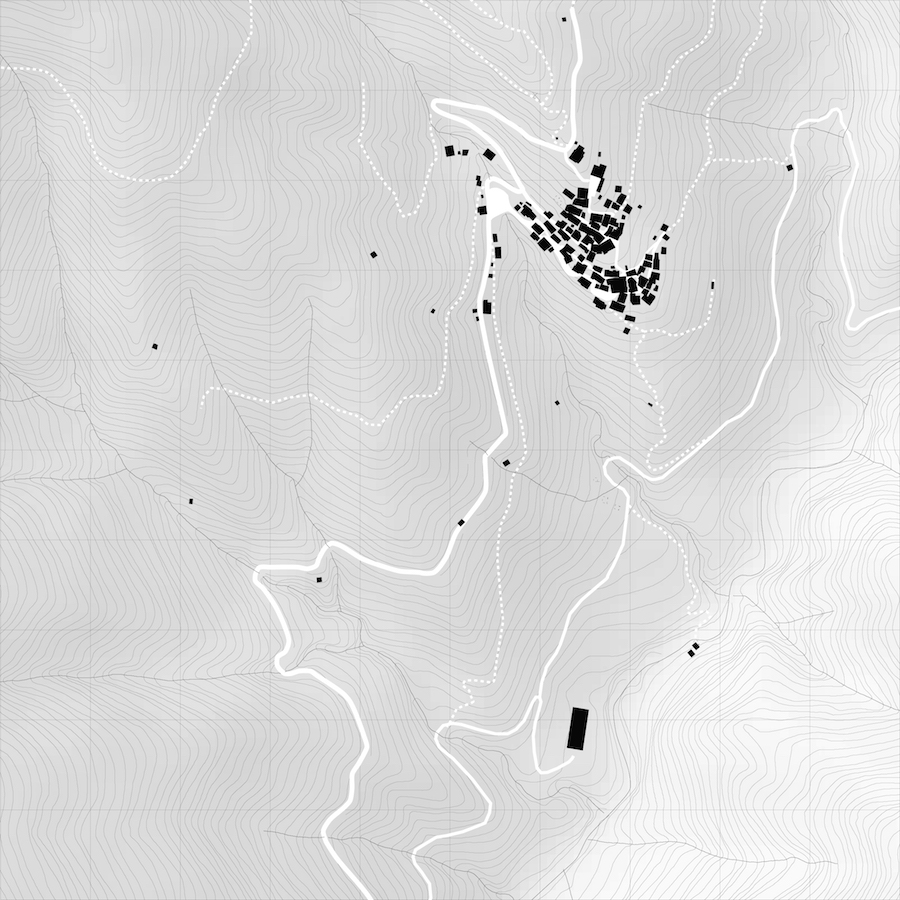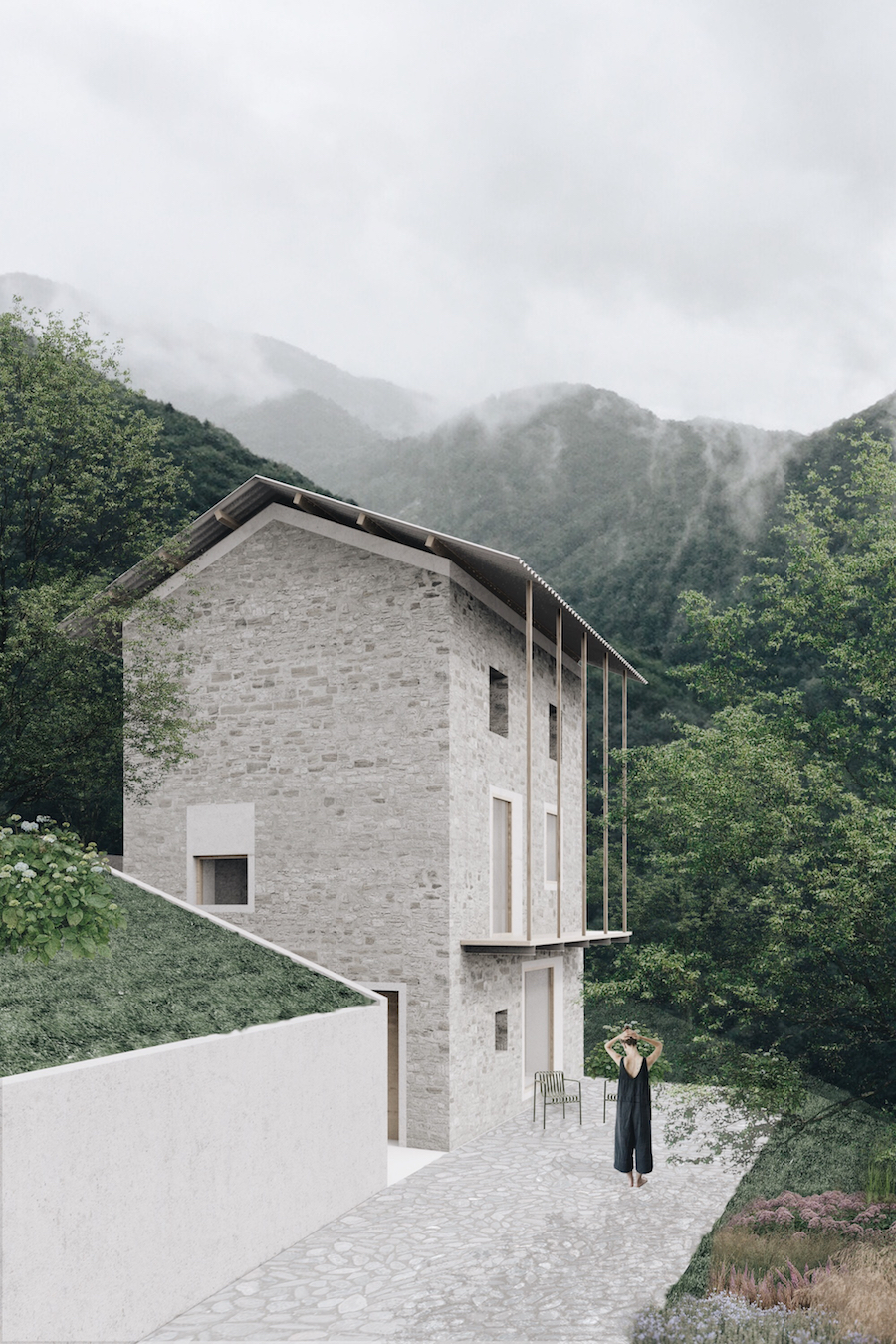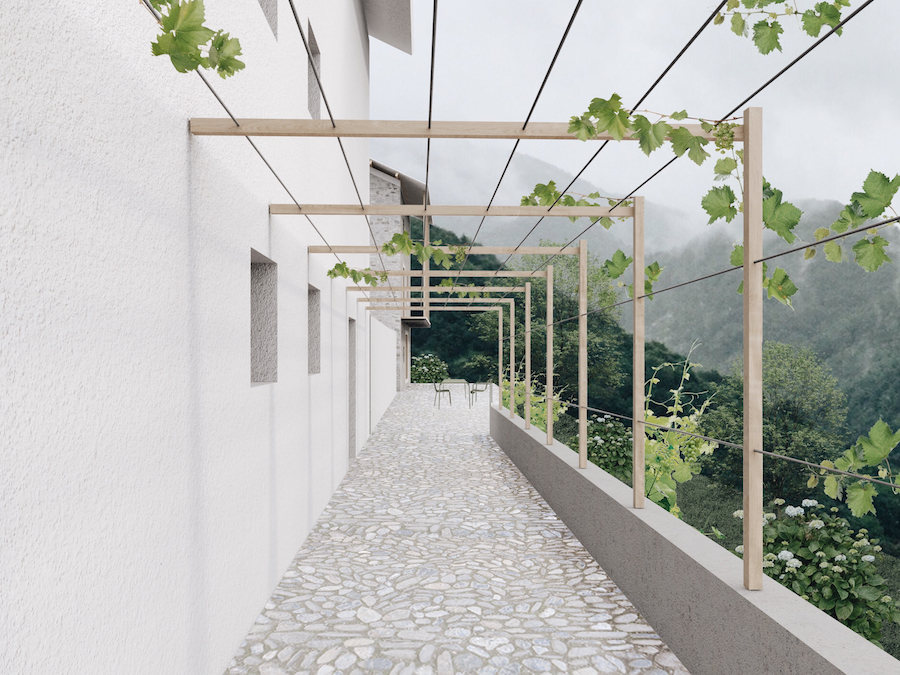Topolò/Topolove – The Village as a House
a revitalization proposal for the border village of Topolò (Italy)
Have you ever lived in a village, as if it was your house?
Have you ever dreamed in the woods, as if they were your garden?
Imagining the revitalization of the village of Topolò as if it was a house – where each tiny house is a room of a bigger house - the village itself – means to tackle the problem of the empty village as a complex ecology, inventing new uses for abandoned spaces and thinking about the new community inhabiting and taking care of them.
The project is the winner of the New European Bauhaus "Rising Stars" prize in the category "Prioritizing places and people who need it the most".
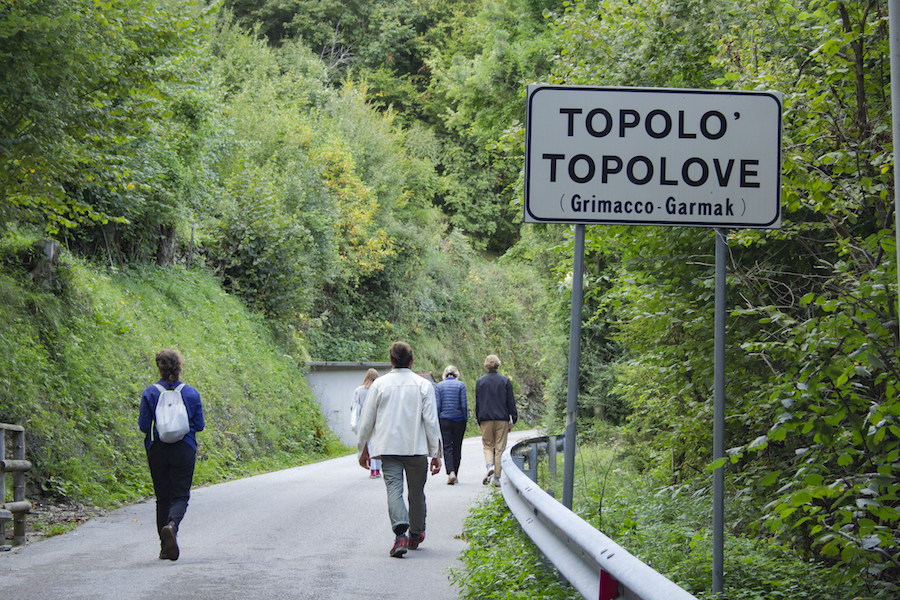
(Photo by Tanja Marmai)
Concept
The revitalization of empty villages is one of Europe's most pressing challenges. As a result of urbanization, emigration of people away from underdeveloped areas and the desire for a more comfortable life in the city, the emergence of empty villages became one of the contemporary challenges for architects.
In Italy, there are 3644 municipalities with less than 2000 inhabitants, which makes up almost half of all the Italian municipalities. Among these is also Grimacco (Udine) and within it the village of Topolò, located at the Italian-Slovenian border. This position made it into the stage of all the dramatic events of the 20th Century: World War I and II were fought here and the Cold War also left a big mark. Topolò, which at the beginning of the 20th century had 400 inhabitants, counts today only 23 inhabitants.
The concept we are presenting here was developed by Janja Šušnjar who lived in Topolò together with other members of the collective in 2018 to work on her master's thesis dedicated to the village. The concept derives from a lived experience, where everyday life tasks were scattered in the many empty spaces of the village due to the lack of basic infrastructure in people’s houses (the common breakfast was done in one house, the bathroom used was in another, the work on the computer was done in the only house with internet).
The Village as a House proposes a new understanding of Topolò as the home of the local community, which can extend its everyday life by living in common areas such as the living room with a shared library, the kitchen which can be transformed into a restaurant, a vernacular unused structure that becomes a laboratory. Meanwhile, individual dwelling houses - rooms - still offer sufficient privacy, but due to limited space, they cannot satisfy all of the needs of a modern individual.
Through such an approach, abandoned spaces are given new uses, a strong sense of community is established, and people are provided with a new form of living.
Keywords: Village as complex ecology – Revitalization – Empty villages – Care – Community
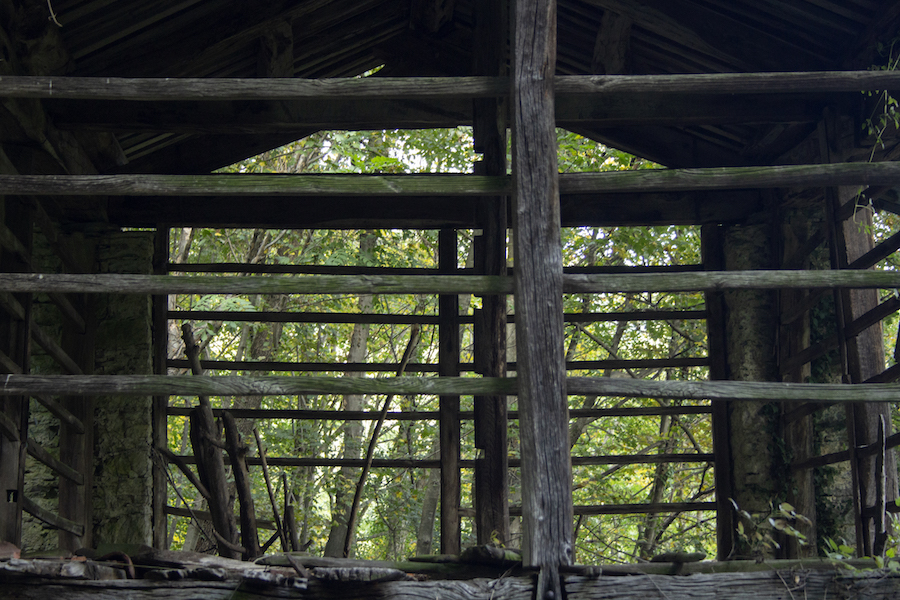
(Photo by Tanja Marmai)
We consider coming (back) to places that were once inhabited and which today host mainly ruins or holiday houses for many reasons on of the most environmentally caring choices.
To take up residence in houses which are empty but already there, to not consider expanding small houses to answer to contemporary necessities for bigger spaces but to find this generosity of space in other empty buildings functioning as common rooms, to use the paths of the village (which in Topolò are only dedicated to pedestrians since cars are parked in a shared parking place at the entrance of the village) as hallways of one shared house – all of this means to critically confront the capitalist credos of development, expansion, commodity, incessant growth. Dare not to dream big, but to maintain; not to innovate but to repair, not to start anew but to take care of what already exists – paraphrasing Rosario Talevi, Gilly Karjevsky and Sascia Bailer (in Letter to Joan).
The concept of the project lies in an aesthetic interpretation of the local architectural heritage, beyond its functionality. Moreover, the idea responds to the experience of living in the village of Topolò as if it is a big house with different rooms-houses, used for different functions. The houses, as it happens quite often in mountain areas, are small, humble houses: peasants’ life was mainly happening outside, in the fields and forests, and the house was mainly used after the sunset and in winters. Today’s needs have changed and everyone needs houses with bigger spaces: the small houses of the village are not big enough to satisfy today’s needs of space. Within the project, The Village as a House instead of transforming each house following individual’s contemporary needs, the shape, structure, and size of the singular house remains the same while the few bigger houses of the village host communal shared spaces – as the library, the kitchen, the bathroom, the atelier, the laboratory, etc. In this way, the morphology of the village, with its small beautiful houses, is kept intact and the question of the functionality of the spaces is answered through a proposal of a new experience where inhabitants at the same have their own private space but meet in collective spaces where interaction, trust, help, and support are fostered. The concept encourages active care-taking of the whole village by the community.
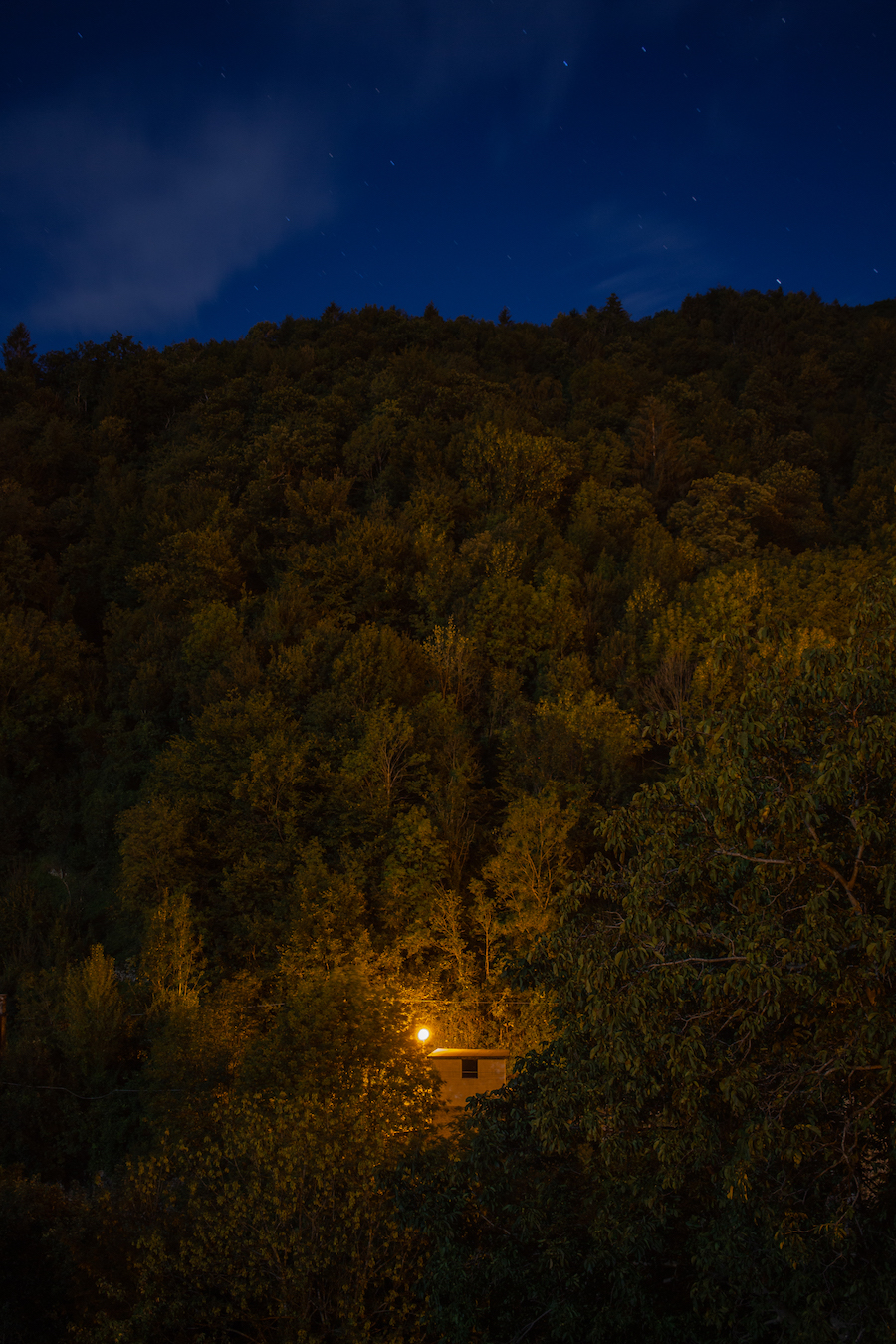
(Photo by Antônio Frederico Lasalvia)
The concept answers to the issue of abandoned, almost empty villages in Italy (and in particular of the area around Topolò) putting in the center a community that intentionally decides to live in the place, sharing knowledge, and spaces and recognizing its foundation in values such as reciprocity, collaboration, support, and commonality. The community is not an imagined community but it is made by people already living in the village and people cyclically coming back, to whom Topolò is their heart-quarter.
And if mainstream practices of dealing with abandoned villages consider mainly tourism as the only possible future (a kind of tourism which is almost morbidly in search of ghost towns and villages), imagining a community of young creatives who work on their projects through the internet but at the same time share their everyday lives with their peers is a quite different approach to the issue.
The concept itself, furthermore, which does not divide public spaces from private ones, outside spaces from inside spaces (the hallways are here the paths), and which considers the village as a big house that should be taken care of in its totality, is quite unique and could be of inspiration to other communities and villages. Considering in a revitalization project the importance of the “connecting tissue” of the village with its paths being hallways under the sky, the idea of the inhabitants moving during the days through different buildings and in the landscape – in contrast to strong attachment to private property, which is sadly typical for small places – puts the values of care and reciprocity in the center of the reflection and action. Care work becomes better when it is done again, creating the specificity of a relation through intensified involvement and knowledge. It requires attention and fine-tuning to the temporal rhythms of an “other” and to the specific relations that are being woven together (Maria Puig de la Bellacasa, Matters of Care).

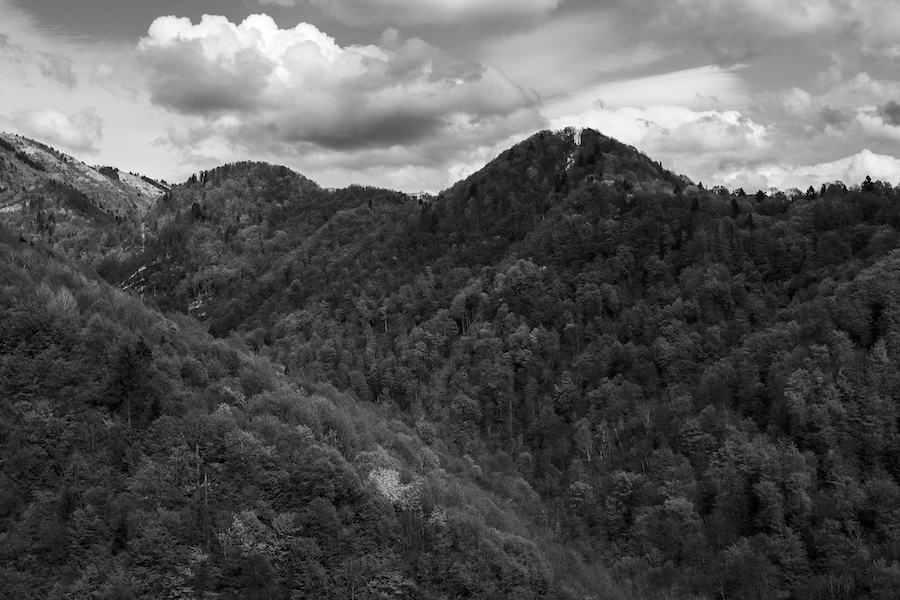
(Photos by Nik Erik Neubauer)
More about the project in a long interview to Janja Šušnjar (in Slovene) here.


